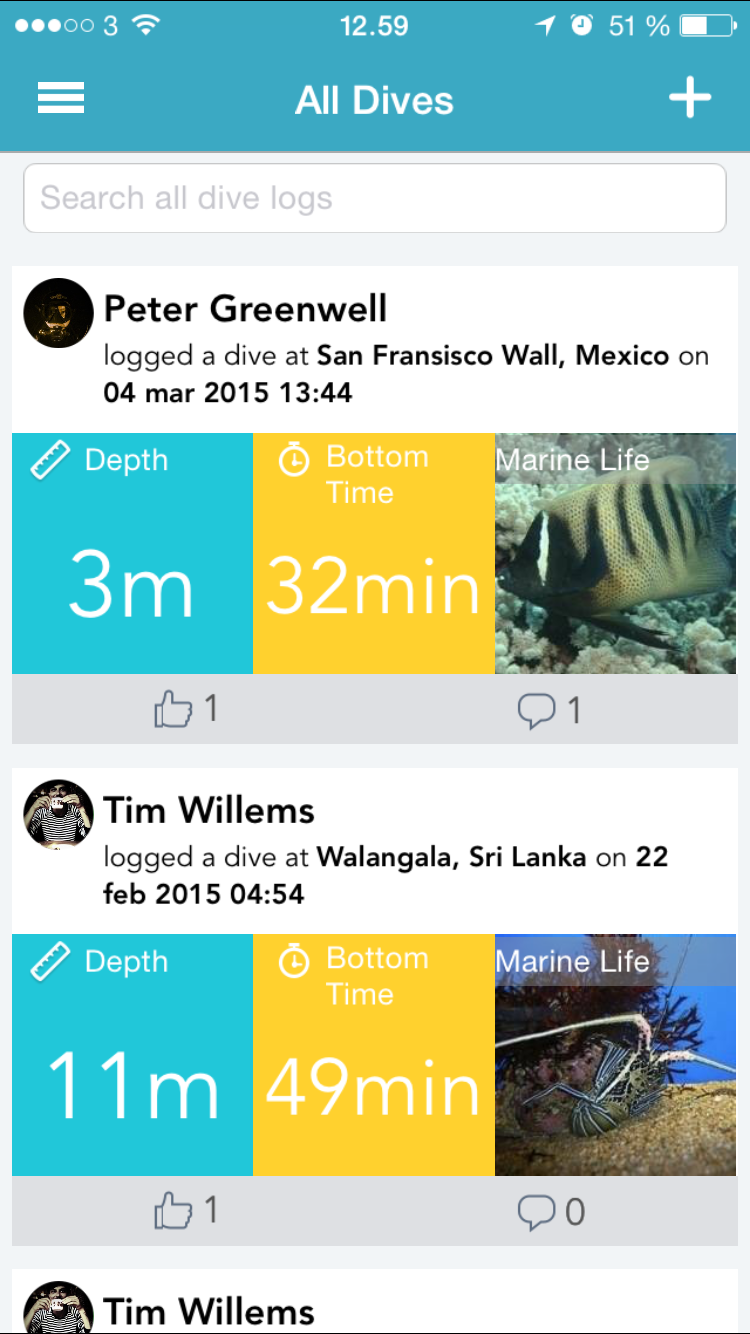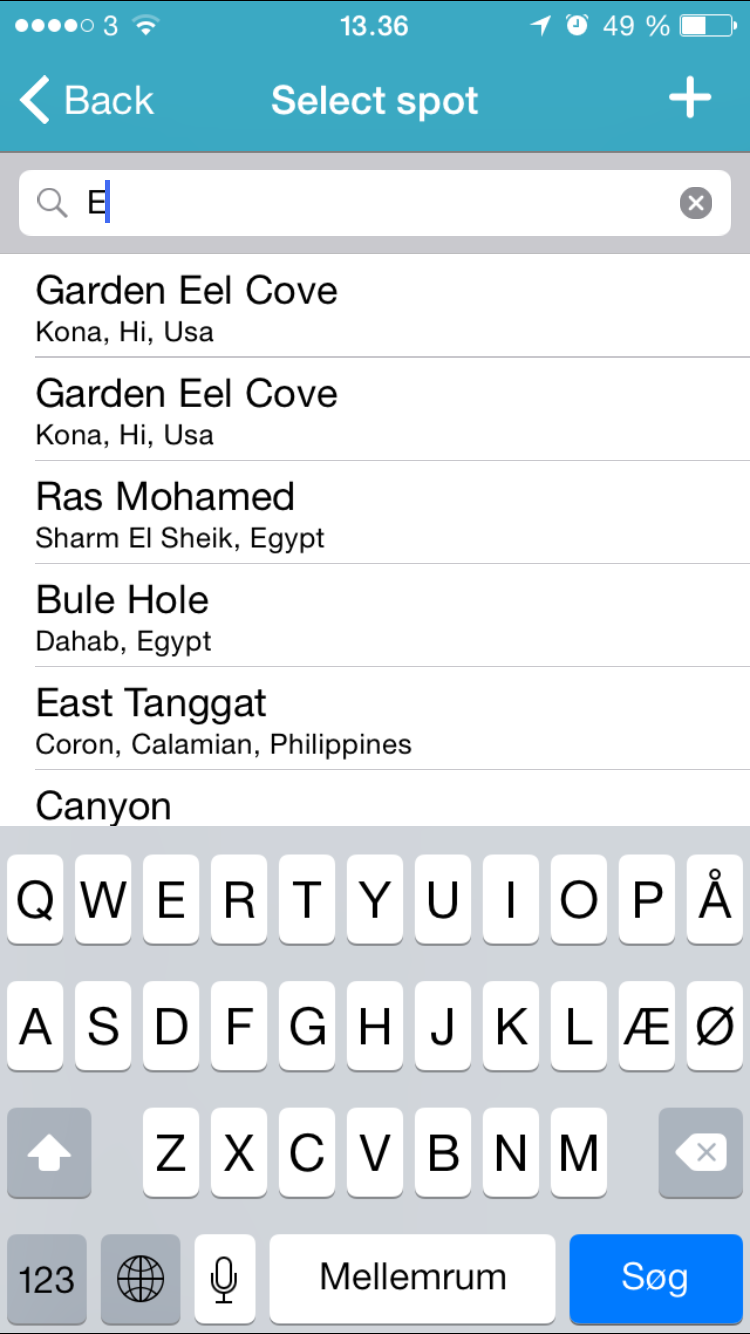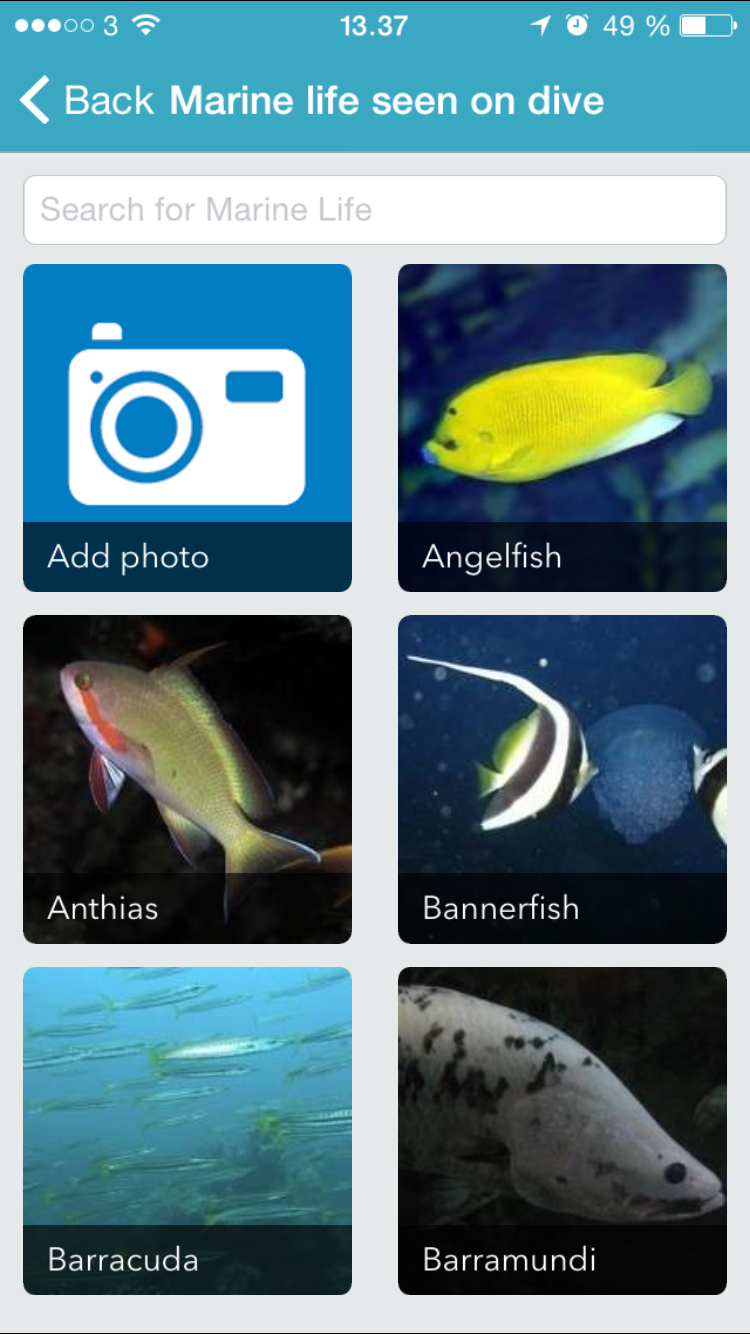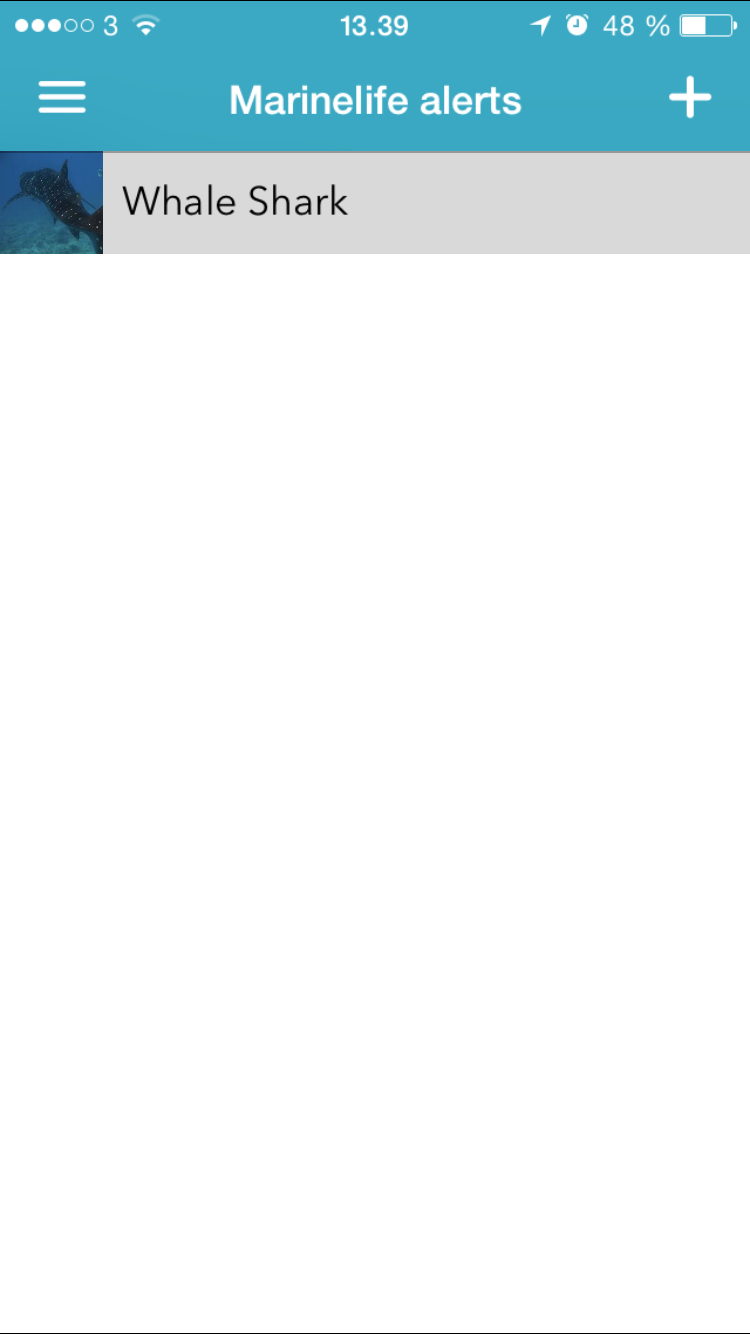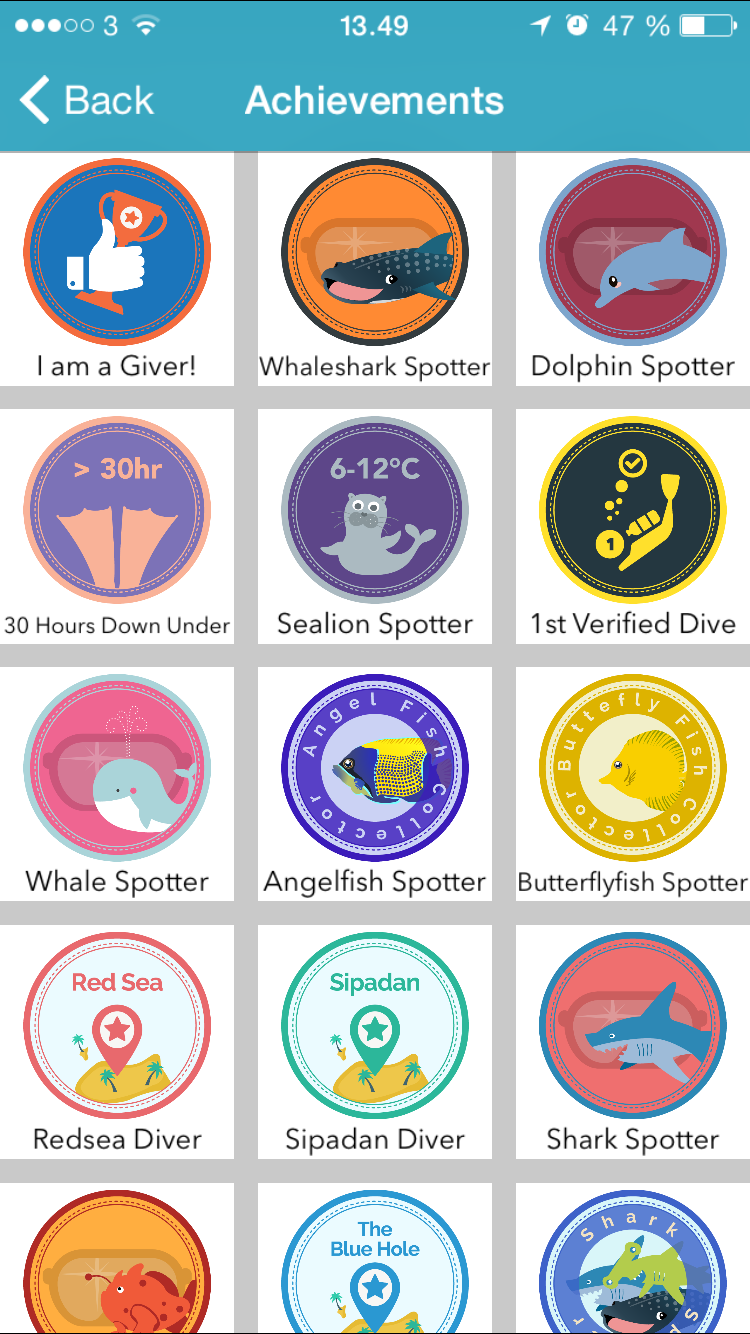After my initial review, I downloaded the (free) Scuba DiveShare app and took it for a spin. The weather hadn’t really allowed for diving at home the last couple of weeks, so I decided to test the app using an older dive from my latest trip to Egypt.
The first interface presents users with a social-media style newsfeed of other users’ dives, which are shared among all app users, so you’re not limited to people you befriend — there is no “friend” element to DiveShare. The contemporary design is appealing, and does not try to emulate a physical logbook. The information in the feed includes the diver’s name, the dive site’s name, and the date and time, all in text format. You’re visually presented with depth and duration of dive, as well as one logged marine-life sighting. For more information, you must click the dive entry. You can comment on and “like” the entry, just as on other social platforms.
Logging a dive is equally visual. Rather than text boxes, you have a tile-like interface, and touching each tile in turn allows you to enter information. There’s no requirement to complete each in any order, so you can skip between tiles as you prefer and ignore the ones that aren’t relevant to your dive. The site-entry form shows one of the app’s main strengths: start typing and the app suggests dive sites based on its database, meaning that if another user has logged a dive at your location, you can shortcut entering the location information.
Entering marine life info is equally intuitive; with a photo database to help you identify and add whatever you spotted. You can also add your sighting manually if it’s not in the database. Once you’re done entering your information, you save the dive and it’s shared with the rest of the community. You can also share your dive on Facebook for all of your non-diving friends to see (and envy).
One interesting feature that’s still in a bit of a beta version is the marine-life alert function. Enter which animal you’re interested in, and the app will notify you whenever a dive is logged where that animal was spotted. At this time, there are only a few species to choose from, and the alerts aren’t location-specific, but the developers have assured me that this will be addressed. Once this function is fully operational, you’ll be able enter any marine animal (e.g. oceanic whitetip sharks) to your list of alerts, and anytime a diver logs a sighting of one near you, you’ll be alerted. An automated, worldwide, geo-location-based alert system for marine-wildlife encounters — what’s not to like? I could foresee this feature being of great interest to marine biologists as well, as it would allow them to catalog marine wildlife sightings far more efficiently.
An additional fun element is a game feature, similar to what we know from apps like Foursquare and Yelp. As you complete various types of dives, in various locations, you are awarded certain achievement badges, such as “dolphin spotter,” “Red Sea diver,” and “I found the Nemo.” You can also view your dive statistics, including total number of dives, longest and deepest dive and total time spent under water.
The app, as mentioned, is still under development, both in terms of new functions and in terms of populating the database with dives and dive sites. But it is, in my opinion, one of the most promising new takes on the old concept of a dive log that I’ve seen yet.


